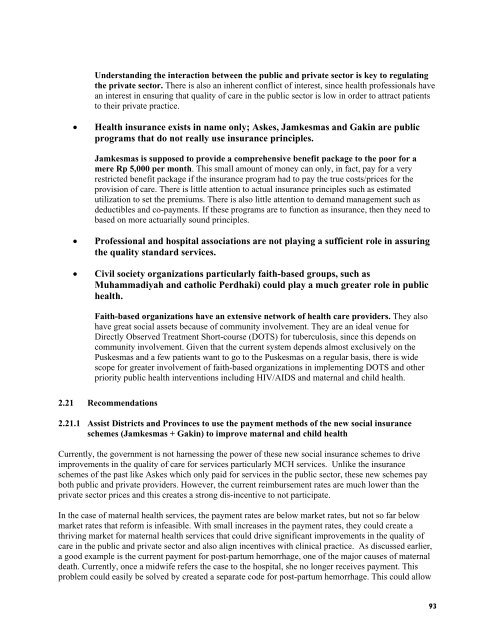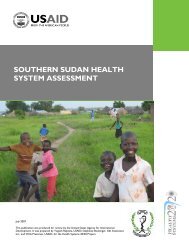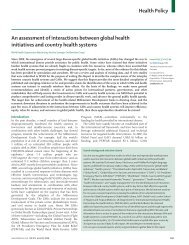PRIVATE SECTOR HEALTH CARE IN INDONESIA - Health Systems ...
PRIVATE SECTOR HEALTH CARE IN INDONESIA - Health Systems ...
PRIVATE SECTOR HEALTH CARE IN INDONESIA - Health Systems ...
- No tags were found...
Create successful ePaper yourself
Turn your PDF publications into a flip-book with our unique Google optimized e-Paper software.
Understanding the interaction between the public and private sector is key to regulatingthe private sector. There is also an inherent conflict of interest, since health professionals havean interest in ensuring that quality of care in the public sector is low in order to attract patientsto their private practice.• <strong>Health</strong> insurance exists in name only; Askes, Jamkesmas and Gakin are publicprograms that do not really use insurance principles.Jamkesmas is supposed to provide a comprehensive benefit package to the poor for amere Rp 5,000 per month. This small amount of money can only, in fact, pay for a veryrestricted benefit package if the insurance program had to pay the true costs/prices for theprovision of care. There is little attention to actual insurance principles such as estimatedutilization to set the premiums. There is also little attention to demand management such asdeductibles and co-payments. If these programs are to function as insurance, then they need tobased on more actuarially sound principles.• Professional and hospital associations are not playing a sufficient role in assuringthe quality standard services.• Civil society organizations particularly faith-based groups, such asMuhammadiyah and catholic Perdhaki) could play a much greater role in publichealth.Faith-based organizations have an extensive network of health care providers. They alsohave great social assets because of community involvement. They are an ideal venue forDirectly Observed Treatment Short-course (DOTS) for tuberculosis, since this depends oncommunity involvement. Given that the current system depends almost exclusively on thePuskesmas and a few patients want to go to the Puskesmas on a regular basis, there is widescope for greater involvement of faith-based organizations in implementing DOTS and otherpriority public health interventions including HIV/AIDS and maternal and child health.2.21 Recommendations2.21.1 Assist Districts and Provinces to use the payment methods of the new social insuranceschemes (Jamkesmas + Gakin) to improve maternal and child healthCurrently, the government is not harnessing the power of these new social insurance schemes to driveimprovements in the quality of care for services particularly MCH services. Unlike the insuranceschemes of the past like Askes which only paid for services in the public sector, these new schemes payboth public and private providers. However, the current reimbursement rates are much lower than theprivate sector prices and this creates a strong dis-incentive to not participate.In the case of maternal health services, the payment rates are below market rates, but not so far belowmarket rates that reform is infeasible. With small increases in the payment rates, they could create athriving market for maternal health services that could drive significant improvements in the quality ofcare in the public and private sector and also align incentives with clinical practice. As discussed earlier,a good example is the current payment for post-partum hemorrhage, one of the major causes of maternaldeath. Currently, once a midwife refers the case to the hospital, she no longer receives payment. Thisproblem could easily be solved by created a separate code for post-partum hemorrhage. This could allow93
















